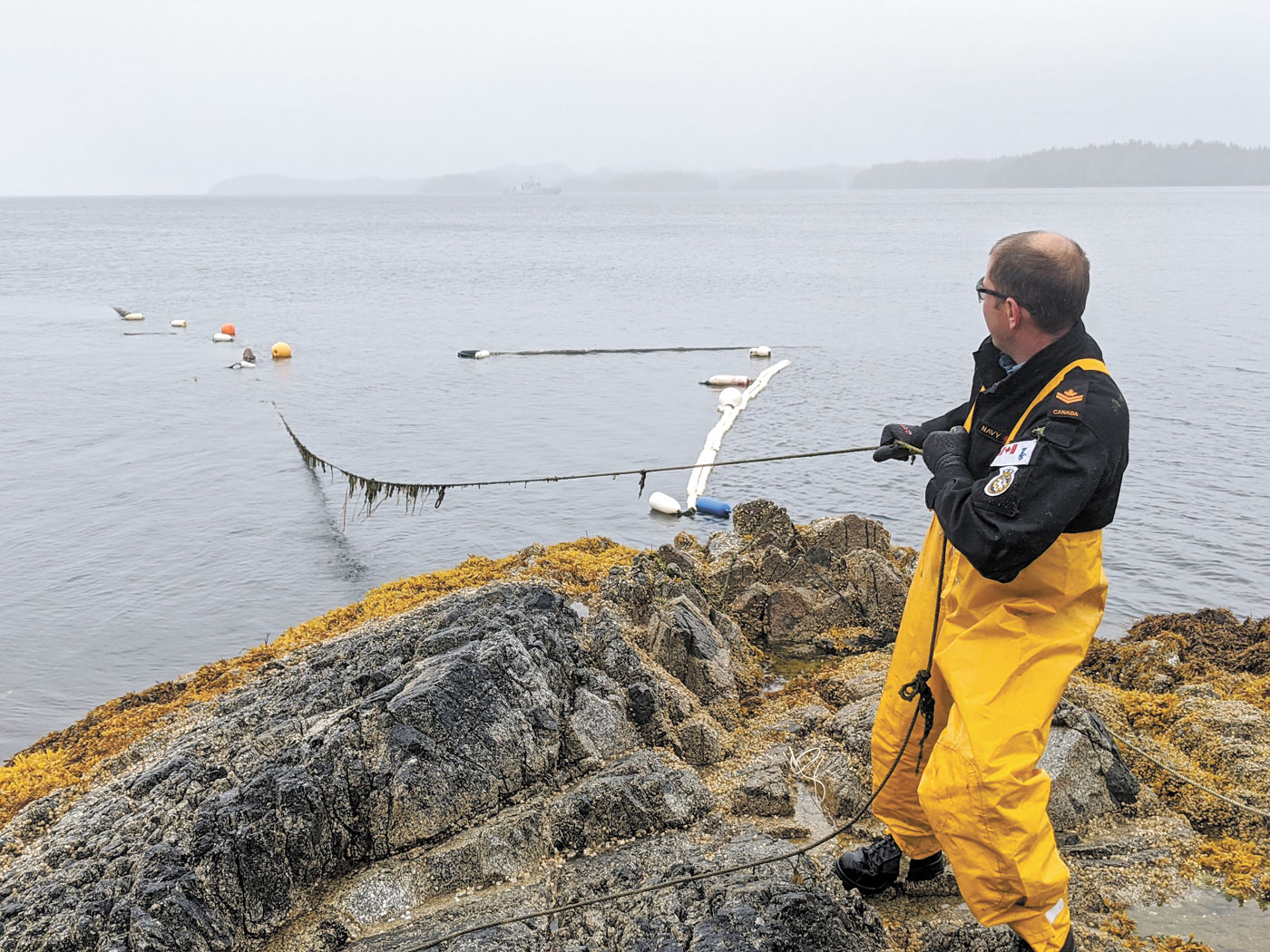Ghost Gear in the Great Bear Rainforest
By Lookout on Sep 14, 2020 with Comments 1
MS Elijah Fraser and SLt Gomery
HMCS Whitehorse
–––
While patrolling the northern Search and Rescue (SAR) Zone north of Vancouver Island along the coastline of British Columbia, HMCS Whitehorse came to anchor in Kitasu Bay in search of respite from a storm.
The picturesque bay is surrounded by the Great Bear Rainforest and some of the most remote areas of the North Pacific Coast.
A member of the ship’s company had hoped to catch a glimpse of the elusive Kermode ‘Spirit’ Bear, along the shoreline through the ship’s ‘big eyes’ binoculars. Unfortunately, what they did see was not a bear. It was large patches of ghost fishing gear polluting the waters and shorelines of the gorgeous bay.
According to the National Oceanic and Atmospheric Association, Derelict Fishing Gear (DFG), as it is more properly known, is a major maritime issue, impacting marine environments across the planet. Studies have found that abandoned fishing gear constitutes up to 85 per cent of the Great Pacific Garbage patch and the majority of ocean plastics by weight. Not only does marine debris foul props and threaten navigational safety for vessels, but it also damages important living marine resources and their habitat. DFG continues to ‘fish’ indiscriminately. This is dangerous for marine environments, especially when it comes to commercially valuable, and endangered, species. Additionally, DFG is also known to break down under the ocean’s corrosive conditions into micro plastics, which can affect every level of the marine food chain.
Five members of Whitehorse’s crew and one embarked Canadian Coast Guard member volunteered the afternoon of their ‘Sunday routine’, as part of a cleanup party accompanied by Whitehorse’s Executive Officer. Over a thousand pounds of line, much of it still attached to buoys, floats, and tattered nets, were pulled from the rocky beaches of Kitasu Bay. In all, four full boat loads were carried and/or towed by the ship’s Zodiac back to Whitehorse.
Once onboard, the piles of “gash” fishing gear were secured to the Sweep Deck for several days of the ship’s ongoing SAR mission. The crew eventually managed to arrange for it to be landed at a Department of Fisheries and Oceans (DFO) jetty in Prince Rupert for proper and safe disposal. While transferring the gear, the DFO informed Whitehorse of the continual problem in the area. They also mentioned they were more than happy to take any DFG found in the future for proper disposal from Royal Canadian Navy ships.
In all, the process from retrieval to disposal of the ghost gear was a labour intensive evolution, which brings into context just how large a job is ahead of us as Canadians to keep our oceans and coastlines clean.
––––
Filed Under: Top Stories
About the Author:







Good on the crew from the ship for doing this. There is lot of it out there.THANKS AGAIN for your efforts HMCS WHITEHORSE